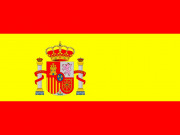EL MÉDANO ROCK PAINTING STYLE ON THE COAST OF THE ATACAMA DESERT IN CHILE: CETECEAN HUNTING OR CETACEAN AS SOCIAL AGENTS?
Resumen
Investigations carried out in recent decades in Paposo/Taltal (25°S, Atacama Desert coast) have
contrasted the academic corpus pillars of the so-called El Médano rock painting style. This style
interprets the local pictograph representations characterized by the design of marine animals and
boats made with red pigment asdemonstration of physical cetacean hunting by coastal Indigenous
people from 2000 years ago until Spanish/Indigenous contact moments, a behavior supposedly
witnessed by the Spanish chronicler Vázquez de Espinosa in 1618. On the contrary,a
reinterpretation of this traditional model, in view of the new data obtained for the archeology of
Taltal, allows us to rule out physical hunting events of large cetaceans from prehistory in this
coastal area, given the null presence of material indicators that attest both, technologically and as
garbage disposal. The contrast between the ethnohistoric information present for the coast of
Paposo/Taltal and new data on local archeology and specifically on the iconography and materiality
of the Médano pictographs openup the possibility of new interpretations of the real interaction that
human groups and cetaceans had in the local landscape construction since prehistory.
Descargas
Publicado
Cómo citar
Número
Sección
Licencia
Los autores retienen los derechos de autor y otorgan a Revista Inclusiones el derecho de publicación bajo Creative Commons Attribution 4.0 International (CC BY 4.0). Esto permite el uso, distribución y reproducción en cualquier medio, siempre que se otorgue la debida atribución al autor.










